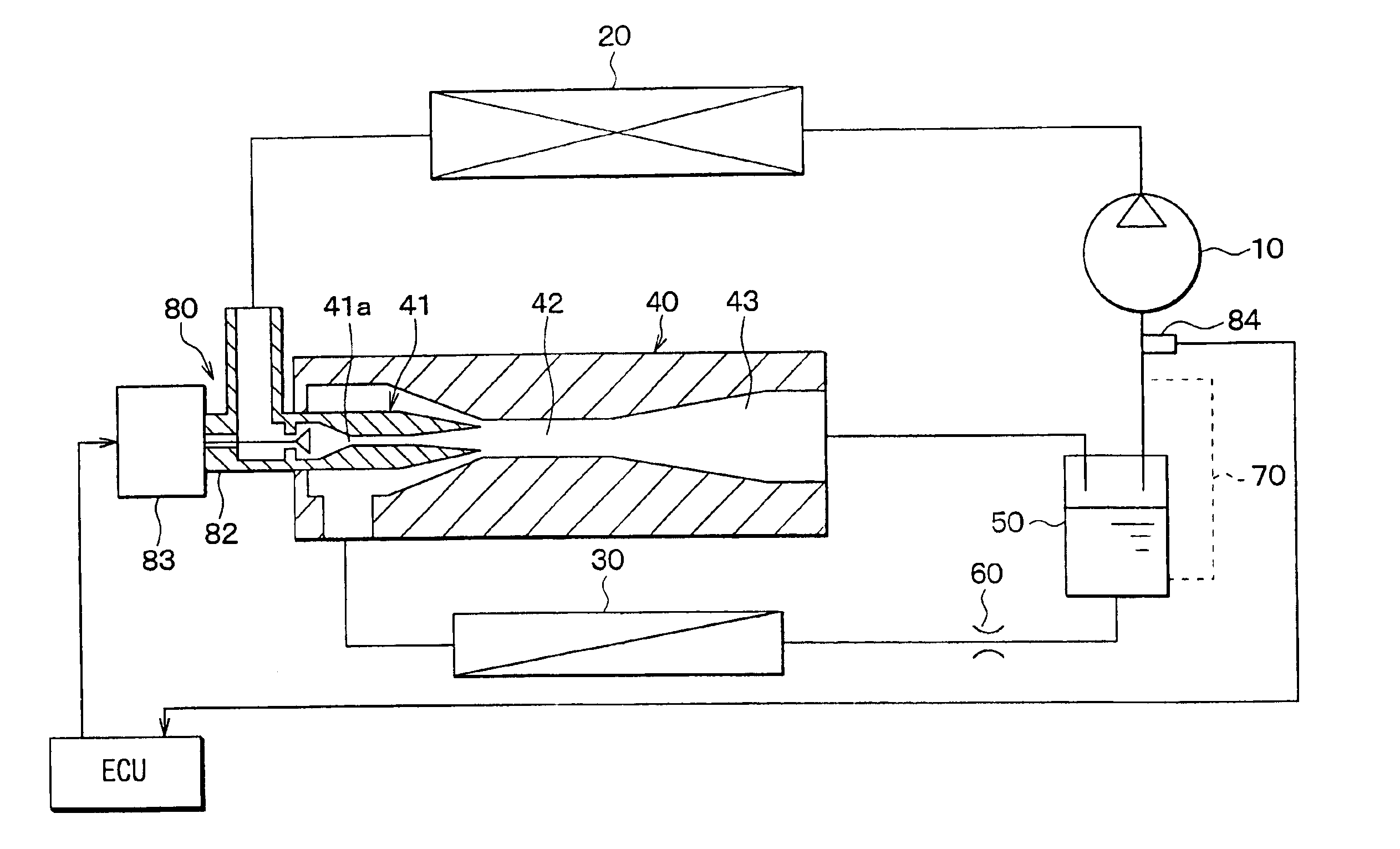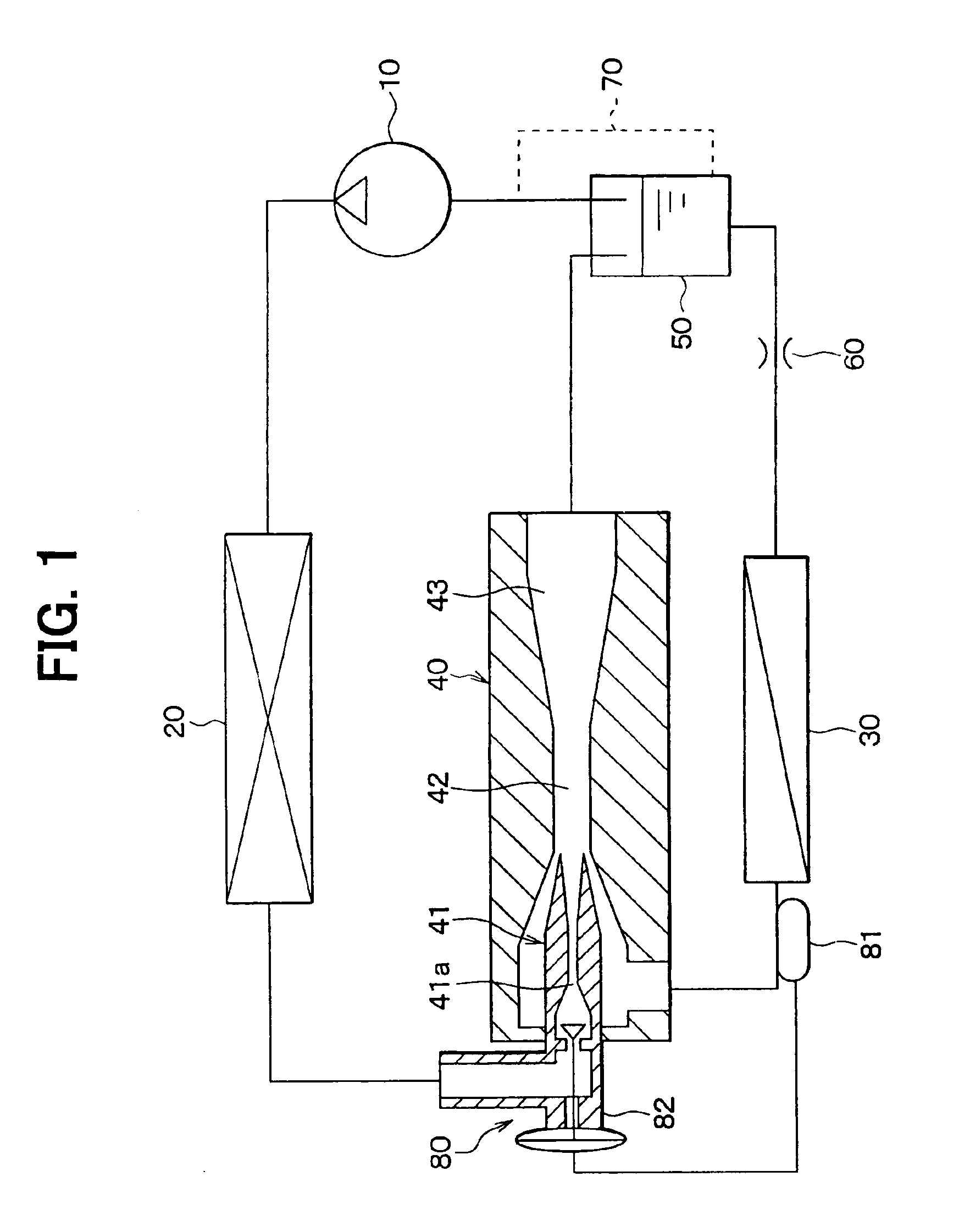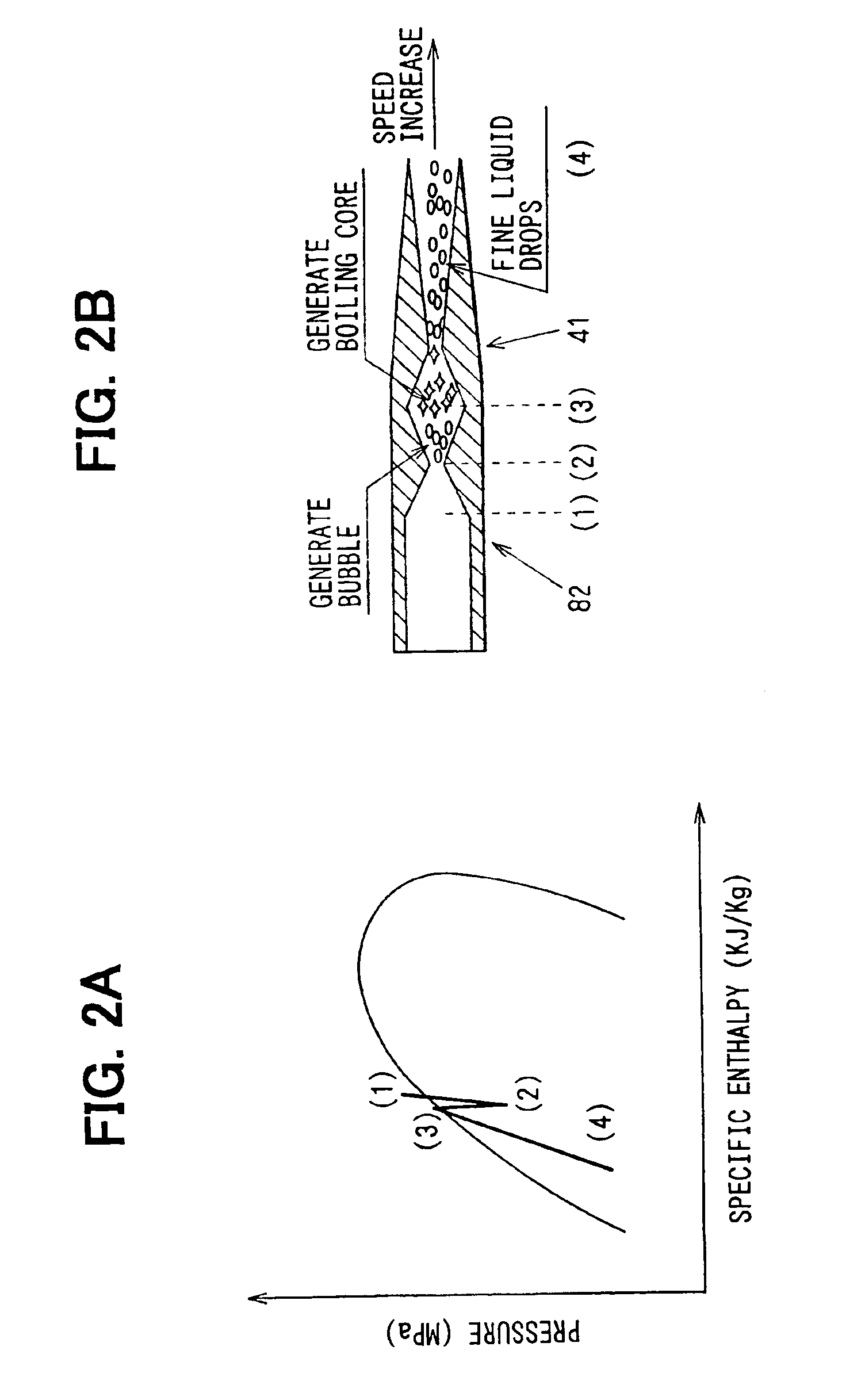Ejector cycle
a technology which is applied in the direction of machine operation mode, refrigeration components, light and heating apparatus, etc., can solve the problems that the efficiency of ejector cycle and nozzle efficiency cannot be improved in a wide load variation area, and the difficulty of minute liquid drops of refrigerant, etc., to achieve the effect of wide load variation area, and improving ejector efficiency and nozzle efficiency
- Summary
- Abstract
- Description
- Claims
- Application Information
AI Technical Summary
Benefits of technology
Problems solved by technology
Method used
Image
Examples
first embodiment
In the first embodiment, an ejector cycle is typically used for a vapor compression refrigerator used for a showcase for refrigerating foods. As shown in FIG. 1, a compressor 10 is an electric compressor for sucking and compressing refrigerant circulated in the ejector cycle. A radiator 20 is a high-pressure heat exchanger for cooling high-temperature and high-pressure refrigerant discharged from the compressor 10 by performing heat-exchange operation between outside air and the high-temperature and high-pressure refrigerant. Further, an evaporator 30 is a low-pressure heat exchanger for cooling air to be blown into the showcase by evaporating liquid refrigerant, more specifically, by performing heat-exchange operation between the air and low-pressure refrigerant. An ejector 40 sucks refrigerant evaporated in the evaporator 30 while decompressing and expanding refrigerant flowing out from the radiator 20 in a nozzle 41, and increases pressure of refrigerant to be sucked into the com...
second embodiment
In the above-described first embodiment, the throttle opening degree of the variable throttle 80 is controlled so that the super-heating degree of the refrigerant at the outlet side of the evaporator 30 becomes in the predetermined range. However, in the second embodiment, the throttle opening degree of the variable throttle 80 is controlled so that the super-heating degree of the refrigerant at a refrigerant suction side of the compressor 10 becomes in a predetermined range (e.g., 0.1-30 degrees). That is, the temperature sensing portion 81 is disposed at the refrigerant suction side of the compressor 10, and the throttle opening degree of the variable throttle 81 is controlled so that the super-heating degree at the refrigerant suction side of the compressor 10 becomes in the predetermined range.
In the second embodiment, the other parts are similar to those of the above-described first embodiment, and detail description thereof is omitted. Therefore, the advantages described in th...
third embodiment
In the above-described first and second embodiments, the variable throttle 80 is a mechanical variable throttle in which its throttle opening degree is mechanically changed based on the pressure difference and the like. However, in the third embodiment, as shown in FIGS. 4 and 5, an electrical temperature sensor 84 is disposed to detect a refrigerant temperature, and an actuator 83 is controlled by an electronic control unit (ECU) based on the signal from the electrical temperature sensor 84, so that the throttle opening degree of the variable throttle 80 is controlled. In the example of FIG. 4, the electrical temperature sensor 84 is disposed at the refrigerant outlet side of the evaporator 30 to detect the refrigerant temperature (refrigerant super-heating degree) at the refrigerant outlet side of the evaporator 30. Therefore, in this case, the ECU controls the actuator 63 to control the throttle opening degree of the variable throttle 80, so that the super-heating degree at the r...
PUM
 Login to View More
Login to View More Abstract
Description
Claims
Application Information
 Login to View More
Login to View More - R&D
- Intellectual Property
- Life Sciences
- Materials
- Tech Scout
- Unparalleled Data Quality
- Higher Quality Content
- 60% Fewer Hallucinations
Browse by: Latest US Patents, China's latest patents, Technical Efficacy Thesaurus, Application Domain, Technology Topic, Popular Technical Reports.
© 2025 PatSnap. All rights reserved.Legal|Privacy policy|Modern Slavery Act Transparency Statement|Sitemap|About US| Contact US: help@patsnap.com



